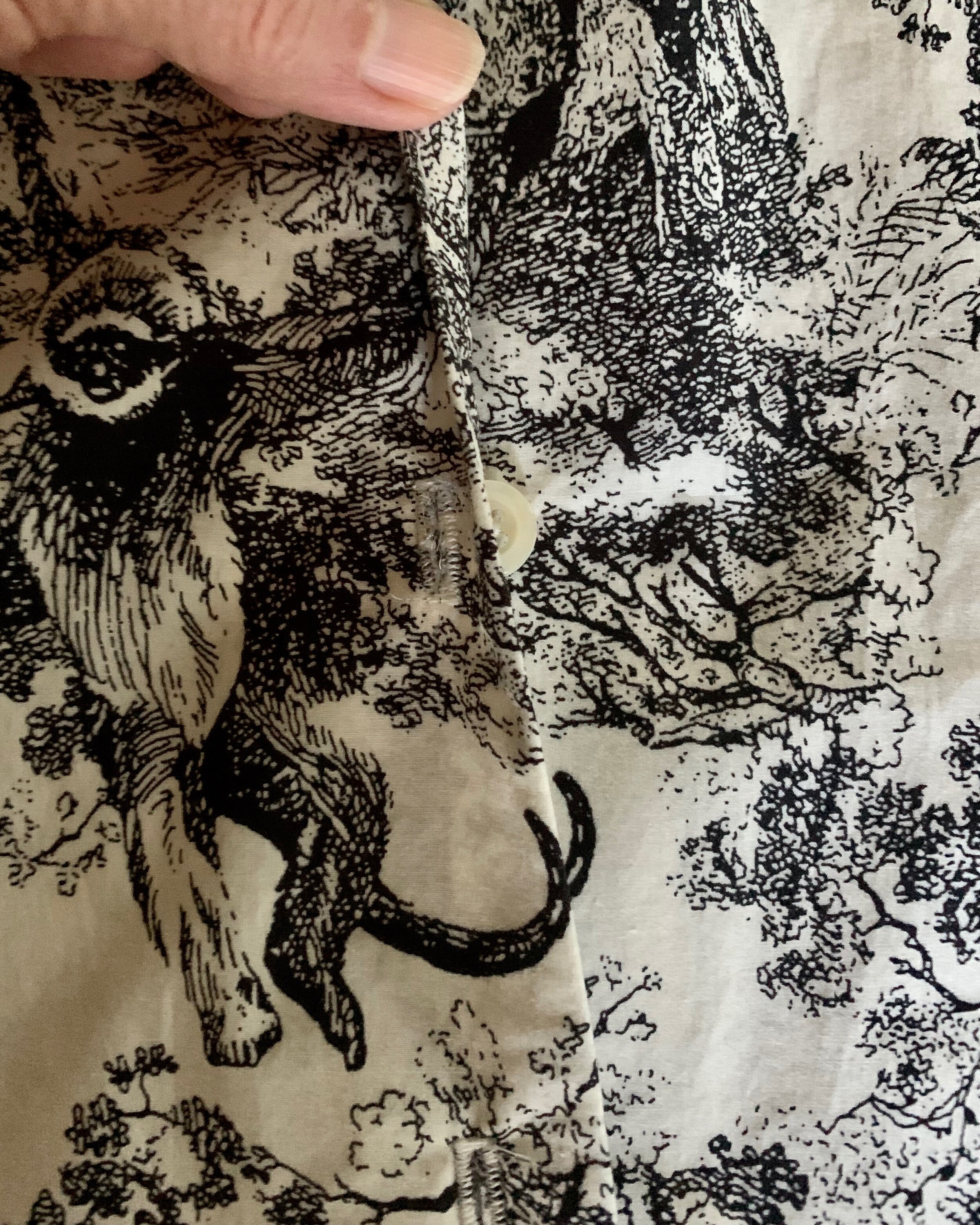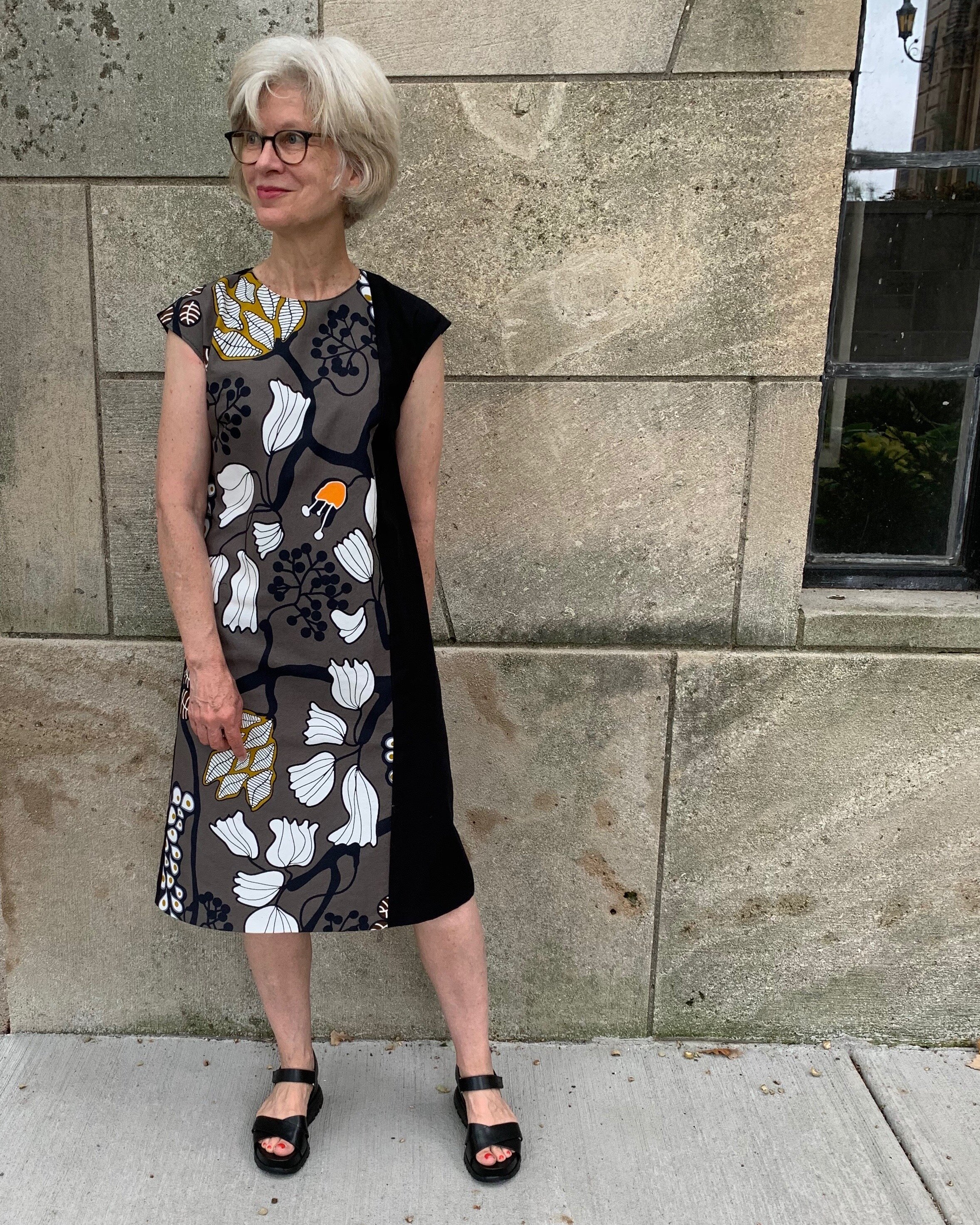Four Fennel Fanny Packs
/The Fennel Fanny Pack by Sarah Kirsten is a charming, functional little pouch that I have been eyeing on social media, and my middle daughter requested I make for her at least a year ago. It takes extra effort and motivation for me to tackle sewing projects that are not garments. A great Christmas gift idea is a pretty good motivator, so in December, I decided to go big and make the fennel fanny pack for all of the young adult women in my family. I sewed three in succession, and – embarrassingly- I made more than one major blunder while constructing each and every single one. I am not adverse to unpicking a seam, but I mortified myself for the cavalcade of mistakes on each of them. I eventually got them all done and delivered to everyone’s delight. You would think that would be end of story. But, still smarting from my mistakes, I decided to try this pattern again. It is January and dull, and I broke my arm and it’s hard to try on clothes and the world news is dismal or worse. So, I challenged myself to make a fourth fanny pack without having to rip out any seams. The challenge reward is a fanny pack for myself which would be incredibly useful in my present one arm state.
Challenge results- I had to rip out a few stitches here and there- but not total seams- as was the case in the first three makes. So, I consider that a win. The real win, however, is a fabulous little fanny pack for me. Here are my recommendations for mistake free fennels.
I used lovely Rifle Paper Co. cotton linen canvas fabric from Lakes Makerie for the exterior and a quilting weight cotton for the lining. I interfaced all pieces with Pellon light-weight sew in interfacing, and I ordered this webbing clasp package. I also used Wrights double fold seam binding .25 inch wide.
Tip number one to make assembly easier- use regular nylon zippers in the 7 and 12 inch lengths recommended by the pattern. It’s just plain easier measuring and constructing and safer for your sewing machine needle.
Number two and most important- read and follow the instructions. My bad, but sometimes I get ahead of myself in sewing or decide I should do things in a different order- the hazard of being a long time sewist and thinking I know what’s going on. Well, with this sweet little pack, I actually didn’t fully understand the construction, so I should have simply FOLLOWED THE INSTRUCTIONS. The instructions and diagrams are very good, thorough and clear. I understand some people have trouble with diagrams in two dimensions. SewNorth has a good tutorial here with photos to accompany all the steps. This is a good resource for those who are more visual learners.
Number 3- or where I previously screwed up. If you are using a print, double check to make sure your print and zip openings line up directionally- you want both zips to start on the same side of the pack. I am right handed so I determined the zips would start on the left when wearing the pouch.
Number 4- Measure accurately and use the 3/8 seam allowance as directed for all seams. However, for the zipper installation, I used a ¼ inch seam allowance. That seemed to leave the right amount of zipper exposed and worked best with overall fit.
Be sure to clip the corners on the main panels- step 21- this of course is essential for fit.
Number 5- Add the binding after the main panel is added- after step #22. This is the only time I strayed from the order in the instructions. It is worth it to wrestle with the bias binding even though it is a struggle. It might be worthwhile to make a wider binding- say 3/8 inch. If you are going with pre-packaged, the .25 inch narrow binding is the most appropriate size. I trimmed the seams a bit especially the corners.
Happily, the fourth fennel was almost effortless. I enjoyed making this one so much, I already have plans for another.












































